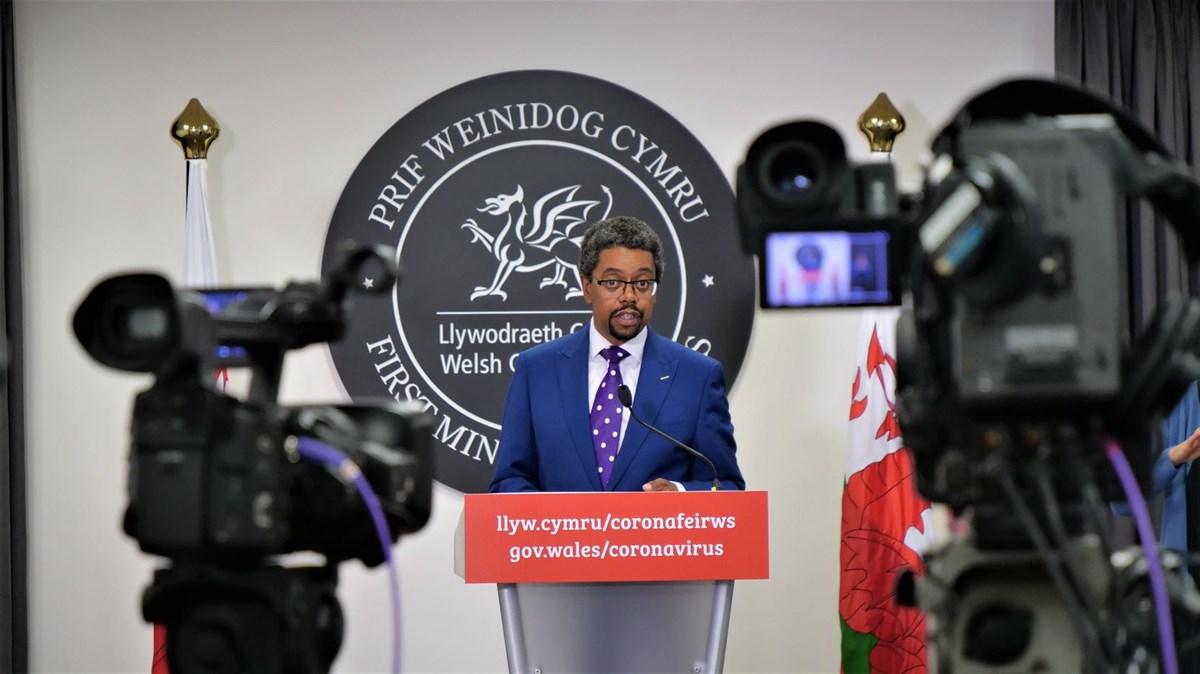Health Minister: Wales entering ‘new phase’ in pandemic – but warns of a possible ‘difficult Winter’

Anyone who displays symptoms of coronavirus, no matter how mild, are being urged to get tested as Wales moves into a new phase of the pandemic.
The message comes as the number of tests returning positive in Wales has dropped to just one per cent. This is down from 43 per cent positivity rate at the peak of the pandemic.
Speaking at today’s Welsh Government briefing, Health Minister Vaughan Gething stated that the prevalence of coronavirus in communities across Wales has dropped significantly.
He added that moving forward people with symptoms of the virus, no matter how mild, presenting themselves for testing and self isolating will help prevent a second peak of the virus and a further lockdown.
Mr Gething said: “We are entering a new phase of the coronavirus pandemic in Wales. Parts of our lives are returning to a new normal as more people returned to work, travel further or get a hair cut.
“Thankfully coronavirus is no longer as prevalent in our communities, as it was just a few weeks ago.
“We have worked with Public Health Wales and our health boards to build an effective testing system that stretches the length and breadth of Wales.
“This means that if you need a test, you can get a test quickly and easily. This testing infrastructure, together with our contact tracing system and support from everyone living in Wales, is fundamental to successfully controlling the transmission of the virus
“We need everyone who shows symptoms, no matter how mild to get a test, and follow the advice to self isolate.
“This will support us in coming out of lockdown and preventing a second peak and in living with the disease until a vaccine or effective treatment is available.
“During recent outbreaks here in Wales, we’ve seen how swift action and effective contact tracing can stop coronavirus in its tracks and prevent it from passing into wider community transmission. An enormous amount has been achieved over the past few months.”
There was also a word of caution about a potential second wave in the winter which could put additional pressures on the NHS.
A new report published yesterday suggested that almost 120,000 people could die from coronavirus in the UK between September and next year as part of a “worst case scenario”.
The report, which didn’t take into account actions such as lockdowns or effective treatments / vaccines, urged for preparations to put into place for the NHS over the winter period – which is already facing a backlog of delayed operations and treatments.
One method aimed to reduce the backlog and ease any upcoming winter pressures is the introduction of green zones in hospitals, which would allow routine appointments and procedures to take place.
Mr Gething said: “We’ve directed the NHS to prepare for not just the autumn and the winter, but to prepare for having green zones where we’ll keep them COVID secure and COVID positive zones or zones where you either have suspected COVID cases or COVID positive cases. That separation is really important.
“You either separate sites, so you have a whole site that doesn’t take COVID positive people. Or you separate zones within hospitals for that to take place.
“We’ve talked with a range of our clinical partners and our staff about what to do and how to do that and health boards are planning and implementing that.
“I’ll be publishing more information on what green and red zones look like. It will require us to do some work and spend some money over the summer and the autumn to get that ready. That will mean we should be able to protect more regular NHS activity.”
However the minister ruled out expanding testing for asymptomatic cases in the the wider population and workforces.
He said: “The very clear evidence we have in the Technical Advisory Group that gets published alongside the strategy today, is that actually testing asymptomatic groups, people without symptoms within the population and other workforces without there being a clear purpose of there being evidence to underpin that.
“It isn’t very helpful, because you expect there to be a rate of false positives test to come back positive but on real positives.”
Spotted something? Got a story? Send a Facebook Message | A direct message on Twitter | Email news@north.wales






